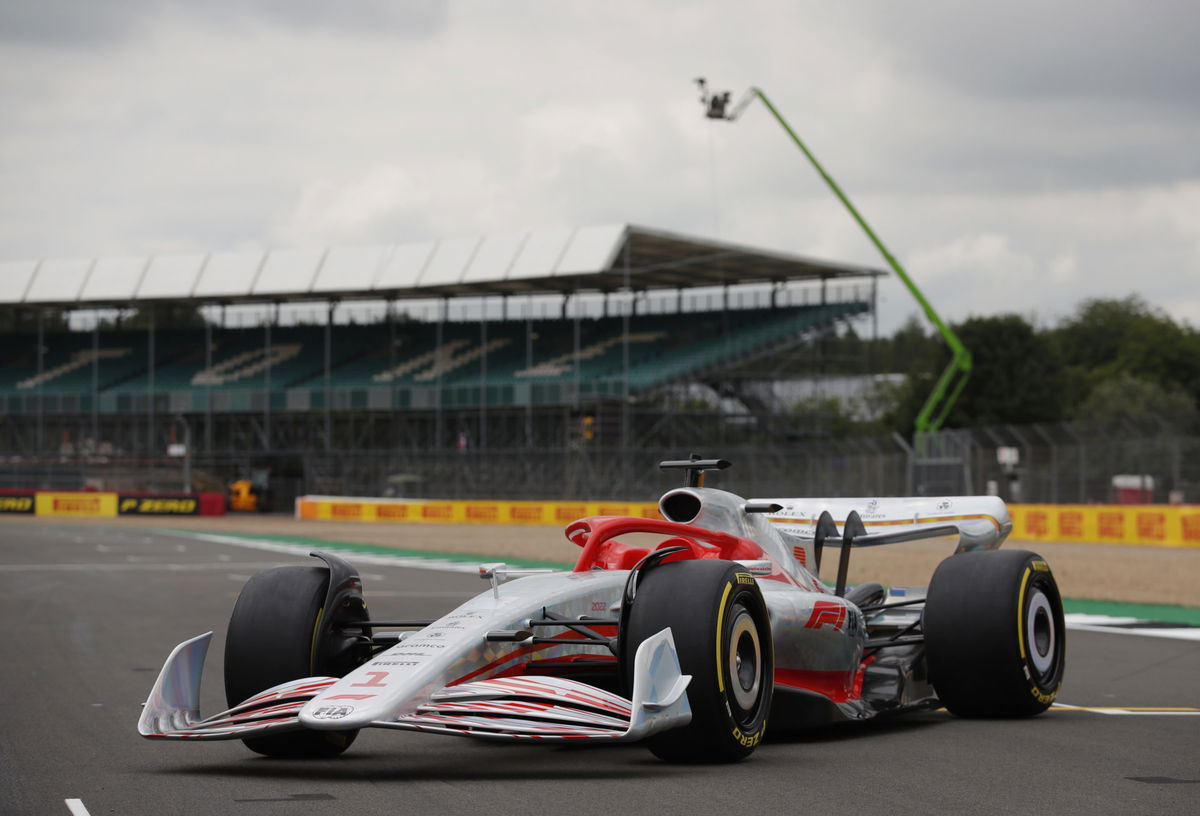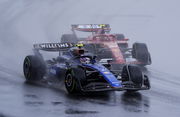
Reuters
Formula One F1 – British Grand Prix – Silverstone Circuit, Silverstone, Britain – July 15, 2021 The new 2022 F1 car is unveiled during a promotional photoshoot REUTERS/Andrew Couldridge

Reuters
Formula One F1 – British Grand Prix – Silverstone Circuit, Silverstone, Britain – July 15, 2021 The new 2022 F1 car is unveiled during a promotional photoshoot REUTERS/Andrew Couldridge
The 2022 F1 cars were initially expected to be 3-3.5s slower than the current ones. Now, recent reports suggest that the cars would be only around half a second slower than the 2021 car. There is also a possibility that by the end of the season, the 2022 cars would be quicker than their predecessors.
Watch What’s Trending Now!
The new regulations were announced in 2018 after the US Grand Prix, but they got delayed due to the Covid-19 pandemic. The teams have started testing mule cars with 18-inch tires after the Abu Dhabi finale race.
ADVERTISEMENT
Why was the 2022 F1 car expected to be slower?
The new regulations work towards making the car safer and more competitive than ever. The upcoming car design will have simplified top-body aerodynamics, which has reduced the potential to generate downforce. The 2022 car front wing will carry a neutral design to make it aerodynamically sensitive and tackle the “dirty air” issue to ensure close battles.
@Jbams01 this is what an f1 car looks like this year vs next year after the rule change coming in 2022 pic.twitter.com/8FADLCvbT2
— ConnorASSASSIN (@ConnorASSASSIN5) December 11, 2021
Furthermore, the less temperature-sensitive tires will be much bigger in size, with the addition of over-wheel winglets. The overall weight of the car will see an increase of around 5%. These factors were the reasons behind the speculation that the 2022 car might be slower than its predecessor.
ADVERTISEMENT
The car is much faster than expected
Contrary to all the speculations surrounding the 2022 F1 car, the latest reports give a positive outlook. F1 journalist Chris Medland updated about the latest results from the tire manufacturer Pirelli. All the F1 teams are currently testing the F1 cars with 18-inch tires in Abu Dhabi.
ADVERTISEMENT
“Chatting to Pirelli today, the simulations given to them by the teams so far suggest we could see 2022 cars within half a second of the current cars at the start of the year, and quicker by the end. Originally were expected to be 2-3 seconds slower,” said the tweet.
Top Stories
How F1’s 2026 Engine Rules Sound Alarm Bells for NASCAR and Others? – Explained

Max Verstappen’s Siblings: Everything We Know About Victoria, Blue Jaye, Jason Jaxx, and Mila Faye

Who Are Lando Norris’s Parents? Meet Adam Norris and Cisca Wauman

Fans Expose Christian Horner’s Hypocrisy After He Aligns Motives With Lewis Hamilton’s Uplifting Mission

F1’s Champion Sponsor Joins SVG and Connor Zilisch With Bold 2026 Commitments

Chatting to Pirelli today, the simulations given to them by the teams so far suggest we could see 2022 cars within half a second of the current cars at the start of the year, and quicker by the end. Originally were expected to be 2-3 seconds slower #F1
— Chris Medland (@ChrisMedlandF1) December 14, 2021
Additionally, F1 Chief Technical Officer Pat Symonds also suggested similar results in his discussion with Auto Motor und Sport. “We can imagine that the new cars are on average only half a second per lap slower than the current ones at the start of the season. And there could be a tie by the end of the season.”
ADVERTISEMENT
Now that the testing has begun, we are expecting more details on the newly developed cars for the upcoming season. How excited are you for the new season, as F1 enters a new era?
Read More- Two-Time F1 Champion Fernando Alonso Set to Go Under the Knife
ADVERTISEMENT
ADVERTISEMENT
ADVERTISEMENT

